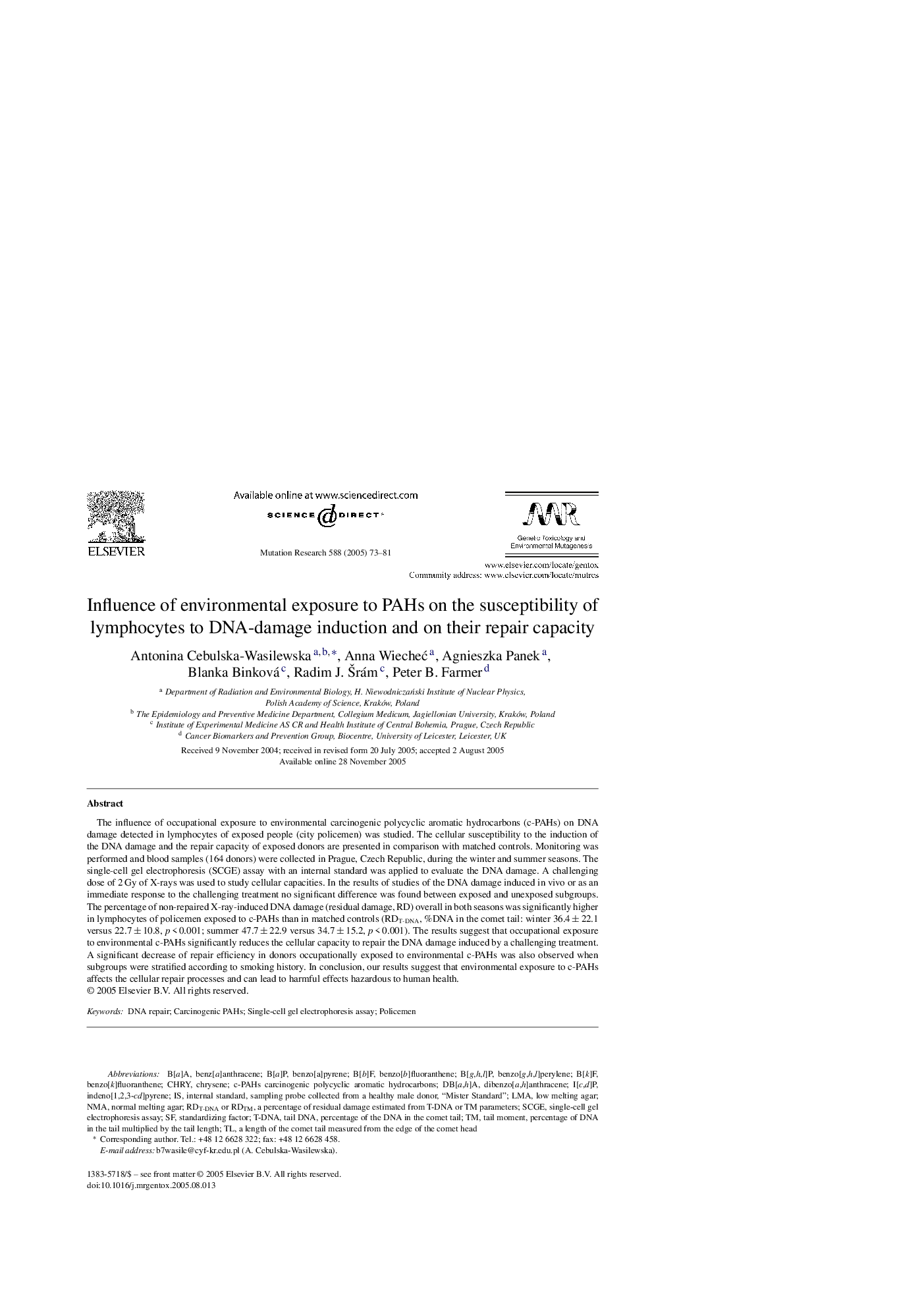| Article ID | Journal | Published Year | Pages | File Type |
|---|---|---|---|---|
| 9910063 | Mutation Research/Genetic Toxicology and Environmental Mutagenesis | 2005 | 9 Pages |
Abstract
The influence of occupational exposure to environmental carcinogenic polycyclic aromatic hydrocarbons (c-PAHs) on DNA damage detected in lymphocytes of exposed people (city policemen) was studied. The cellular susceptibility to the induction of the DNA damage and the repair capacity of exposed donors are presented in comparison with matched controls. Monitoring was performed and blood samples (164 donors) were collected in Prague, Czech Republic, during the winter and summer seasons. The single-cell gel electrophoresis (SCGE) assay with an internal standard was applied to evaluate the DNA damage. A challenging dose of 2 Gy of X-rays was used to study cellular capacities. In the results of studies of the DNA damage induced in vivo or as an immediate response to the challenging treatment no significant difference was found between exposed and unexposed subgroups. The percentage of non-repaired X-ray-induced DNA damage (residual damage, RD) overall in both seasons was significantly higher in lymphocytes of policemen exposed to c-PAHs than in matched controls (RDT-DNA, %DNA in the comet tail: winter 36.4 ± 22.1 versus 22.7 ± 10.8, p < 0.001; summer 47.7 ± 22.9 versus 34.7 ± 15.2, p < 0.001). The results suggest that occupational exposure to environmental c-PAHs significantly reduces the cellular capacity to repair the DNA damage induced by a challenging treatment. A significant decrease of repair efficiency in donors occupationally exposed to environmental c-PAHs was also observed when subgroups were stratified according to smoking history. In conclusion, our results suggest that environmental exposure to c-PAHs affects the cellular repair processes and can lead to harmful effects hazardous to human health.
Keywords
Related Topics
Life Sciences
Biochemistry, Genetics and Molecular Biology
Cancer Research
Authors
Antonina Cebulska-Wasilewska, Anna WiecheÄ, Agnieszka Panek, Blanka Binková, Radim J. Å rám, Peter B. Farmer,
